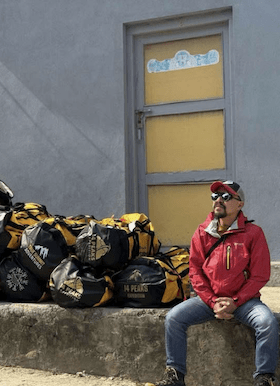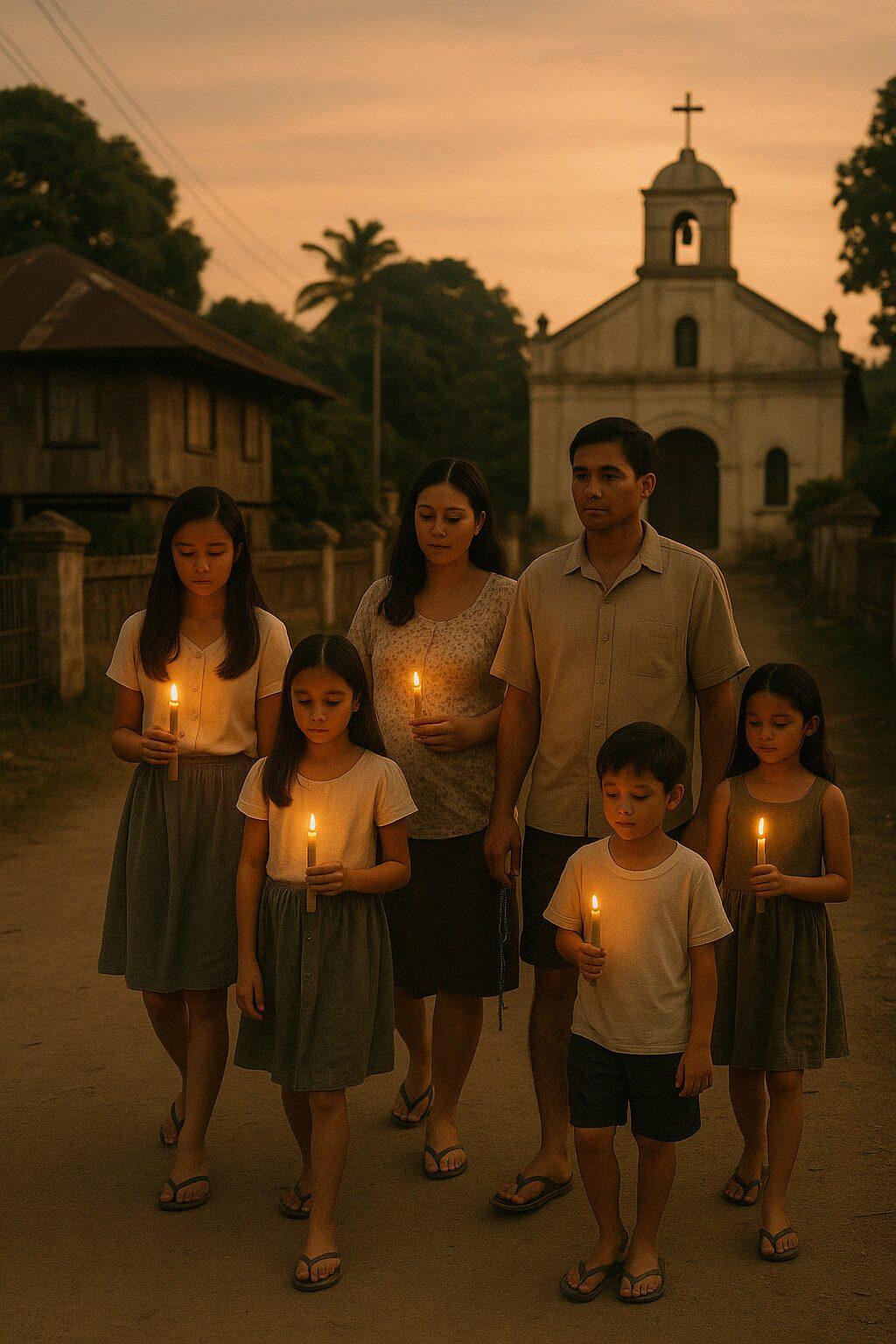Rhisael “Ric” Rabe
Photo from his Social Media Account
The Philippines marked a milestone in Everest history in 2025 with three successful summits. But the season was also shadowed by loss: A fourth climber died on the mountain—tragically, just below the summit
At the edge of the world—where the wind is thin, the snow eternal, and every breath is a test—Mount Everest rises as both summit and symbol. In the 2025 climbing season, a new chapter in Filipino mountaineering was written in that rare air: three Filipinos stood at the top of the world, and one gave his life trying to get there.
Rhisael “Ric” Rabe, Elaine Jhon Panganiban, and Miguel Angelo Mapalad each reached Everest’s 8,848.86-meter peak in May, carrying the Philippine flag above the clouds. But the triumph was marked with tragedy. Philipp “PJ” Santiago II, a 45-year-old Filipino climber, died in the infamous “Death Zone” while preparing for his final push to the summit.
Mountaineering: Sport, Spirituality, and Survival
To understand Everest is to understand mountain climbing itself—not simply as a sport, but as a deeply human endeavor.
Known interchangeably as mountaineering or alpinism, mountain climbing is the art and agony of ascent. It blends endurance, technique, and mental resolve. Recognized by international sporting bodies, it occupies a unique space in athletics—noncompetitive, but no less grueling than Olympic events. The objective is simple: reach the top. The execution is anything but.
People climb for different reasons: the physical challenge, the serenity of high altitudes, the search for meaning, or the promise of perspective. “Mountains demand humility,” Panganiban once wrote in a blog chronicling his climbs across the Cordilleras. “Everest is not about conquering the mountain—it’s about facing the highest parts of yourself.”
For Filipino climbers, in particular, Everest holds symbolic value. Coming from a country of lush islands and tropical forests, standing on frozen Himalayan ridges speaks to a global ambition: that Filipinos, too, belong in the world’s most elite climbing circles.
Mount Everest: A Brief Overview
Known as Sagarmatha in Nepali and Chomolungma in Tibetan, Mount Everest straddles the border between Nepal and China. First summited in 1953 by Sir Edmund Hillary and Tenzing Norgay, Everest has since become a magnet for adventurers, elite athletes, and increasingly, commercial climbers.
The standard Everest expedition spans over a month and involves acclimatization rotations through four high camps. Climbers typically attempt the summit in late May, when short weather windows offer the safest passage. But even then, dangers abound: hypoxia, frostbite, avalanches, and traffic jams on narrow ridges are constant threats.
Despite the risks, Everest continues to draw hundreds of hopefuls each season—driven not only by personal conquest but by cultural legacy and national pride.
The Climb of a Lifetime
On May 15, Ric Rabe became the first Filipino in nearly 20 years to summit Everest. Just three days later, on May 18, Panganiban and Mapalad stood at the top as well, as part of the Philippine 14 Peaks Expedition organized by Nepal-based Seven Summit Treks.
These were not first-time hikers. Months—sometimes years—of training led to that moment: cardiovascular endurance, technical climbing skills, cold-weather conditioning, and mental resilience. Everest is not climbed—it is earned.
Preparation includes simulated climbs, high-altitude treks in the Cordilleras or the Himalayas, ice axe and rope training, and sometimes hypoxic chamber workouts to mimic the effects of oxygen deprivation. Climbers must also plan meticulously—gear, visas, insurance, oxygen tanks, and Sherpa support.
The cost is equally steep. A commercial expedition to Everest ranges from $45,000 to $70,000, often out of reach for Filipino climbers without sponsorships. Many save for years or fundraise through community networks. Their victory is never individual—it is carried on the backs of those who believed in them.
The Death Zone’s Toll
While Panganiban and Mapalad celebrated their summit on May 18, Philipp Santiago II lay motionless in a tent at Camp IV, at 8,000 meters. He had shown signs of exhaustion but was determined to continue. He never got the chance. He died in his sleep—likely from a combination of fatigue, hypoxia, and altitude-related illness.
His death was the first recorded fatality of Everest’s 2025 season. He joined a long list of climbers who never descended from the peak, some of whom still lie frozen on its slopes—silent markers of how unforgiving this pursuit can be.
The “Death Zone” earns its name: above 8,000 meters, the human body deteriorates rapidly. Oxygen levels drop to one-third of those at sea level. Decisions are slower, limbs numb, and survival becomes a race against time. In this realm, even rescue becomes dangerous.
More Than a Summit
For Filipino climbers, Everest is more than just a personal milestone—it’s a declaration that even a country of 7,000 islands can rise to the planet’s highest stage.
According to The Himalayan Database, eight Filipinos successfully summited Everest between 2006 and 2024. The addition of Rabe, Panganiban, and Mapalad in May 2025 brings the total to eleven confirmed Filipino Everest summiters.
The Philippines’ Everest story began with Leo Oracion in 2006, followed by mountaineers like Romi Garduce, Noelle Wenceslao, Carina Dayondon, Janet Belarmino, and Erwin “Pastor” Emata, who opened the door for this new generation. These early climbs drew national attention and corporate sponsorships.
Today, many Filipino climbers venture to Everest without fanfare or backing. They raise funds through community drives and personal savings, chasing the dream with nothing but grit and faith. They carry not just gear, but the aspirations of a nation.
The Future of Filipino Mountaineering
The successful summits by Panganiban, Mapalad, and Rabe have reinvigorated interest in Philippine mountaineering. Across social media, schools, and training gyms, a quiet movement is forming—one that encourages more Filipinos to dream beyond the archipelago’s peaks.
Organizations like the Mountaineering Federation of the Philippines are calling for broader support: high-altitude safety training, more accessible equipment, and government recognition of mountaineering as a serious sport.
But as this season has shown, the mountains grant no guarantees. For every flag raised at the summit, there may be a life that never made it back.
Still, as the sun rises over Everest’s icy ridges, the legacy of these Filipino climbers—those who stood at the top and those who fell in the attempt—continues to elevate the nation’s spirit to new heights.
Legacy in the Clouds
Mount Everest will always hold two truths: it is a stage for triumph—and a graveyard for dreams left unfinished. The 2025 season proved both.
Rabe, Panganiban, and Mapalad returned with stories of wind and willpower, of beauty beyond description. Santiago did not. Yet, his name endures in the same breath as theirs—because the mountain doesn’t only reward those who reach the top; it likewise immortalizes those who dare to try.









